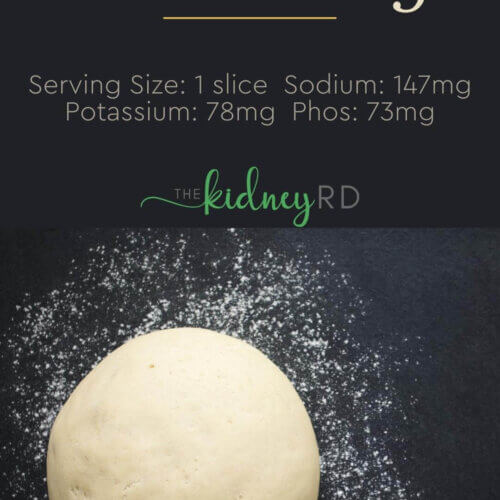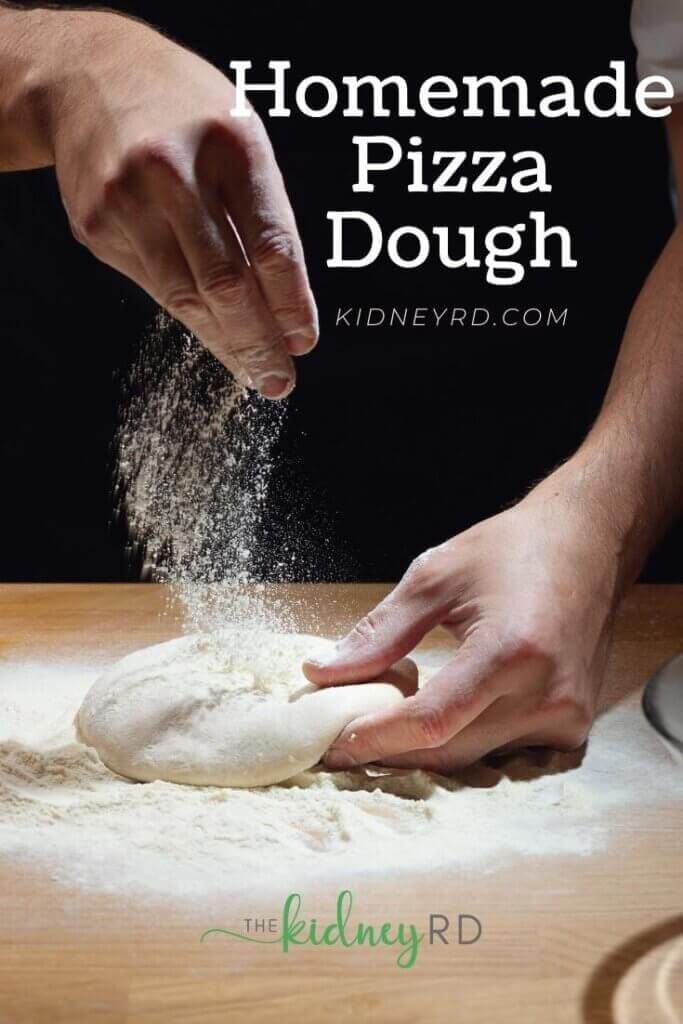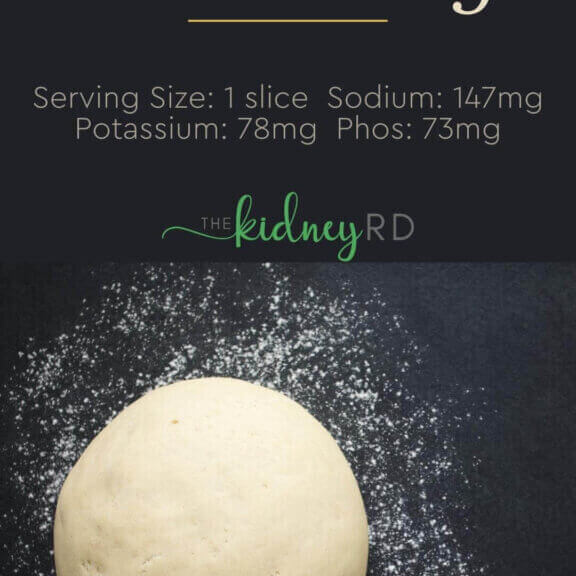Does living with CKD mean you have to give up pizza? No way!
This easy, low sodium pizza crust recipe will help pizza night find its way back into your rotation. Wondering how to keep your pizza toppings kidney friendly? Check out our Homemade Balsamic Pesto Pizza for a delicious, low potassium pizza recipe.
Want to hear about other ways to incorporate delicious foods into the renal diet?
Join our monthly class to find out how we use the power of nutrition to help preserve kidney function. If you prefer a one-to-one setting, consider booking a session with one of our expert Renal Dietitians.

Ingredients
- 2 cups bread flour
- 1 tsp dry yeast
- 3/4 cup slightly warm water
- 1 tablespoon olive oil
Instructions
- In a large mixing bowl, mix together flour and salt.
- In a small liquid measuring cup, add the yeast to the slightly warm water. (Water should be between 105-110°F.) Wait about 5 minutes for the yeast to activate and start bubbling. Add the yeast/water mixture and the olive oil to the dry ingredients and mix with a wooden spoon.
- Once the dough starts to come together, turn it out onto a clean worktop and start kneading with your hands. With the palm of your hands, stretch the dough away from you then fold it onto itself. Add a little flour at a time if the dough is too wet or add a tablespoon of water at a time if the dough is too dry. Continue kneading for 5-10 minutes or until the dough is supple and the surface becomes smooth. Alternatively, mix ingredients in a stand mixer using the dough hook attachment.
- Lightly oil a large bowl and place dough inside. Let rise for at least 1 hour or until it doubles in size. It may take longer if the temperature in your kitchen is colder.
- Once pizza dough has risen, deflate it gently then roll to your desired thickness, shape, and size. Transfer to a parchment lined baking sheet, add your toppings, and bake in a preheated oven at 450℉ for 12-15 minutes or until the crust turns golden brown on the edges. Slice, then serve.
Notes
Nutrition


KidneyRD Verdict
This low sodium pizza crust recipe might seem time consuming, but the majority of the time is hands off while the dough rises. Using a stand mixer makes this recipe even easier, but is not necessary for great results.
If you have never proofed yeast before, the temperature of the warm water matters. Too low and the yeast won’t activate. Too high and the yeast will die and not help with rising. Using a cooking thermometer is very helpful makes this process very easy. For more information about proofing yeast, check out this resource for some more pro tips.

